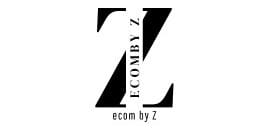STATISTICS FOR PEOPLE IN A HURRY
Statistics for People in a Hurry: In Business and Life
How Numbers Can Save Time, Money, and Mistakes in a Fast-Paced World
In the era of digital speed and compressed attention spans, data is everywhere—but the time to analyze it isn’t. Whether you’re running a business, making personal decisions, or trying to understand the world around you, statistics can offer clarity—if you know how to use it fast.
In 2025, science continues to emphasize that statistical literacy is not just for analysts or mathematicians. With artificial intelligence, big data, and real-time decision-making dominating the landscape, understanding key statistical concepts can mean the difference between success and failure, insight and misinformation.

This article distills the core concepts of statistics for busy people—executives, entrepreneurs, students, and everyday decision-makers. It’s not about complex formulas. It’s about smart shortcuts, intuitive reasoning, and a strategic mindset toward numbers.
Why Statistics Matter More Than Ever in 2025

1. The Explosion of Data
As of 2025, over 463 exabytes of data are created each day. From business dashboards to smartwatches tracking our sleep, data is pouring in. The sheer volume is overwhelming. But statistics give us filters—tools to separate the signal from the noise.
2. AI and Predictive Models Are Now Everywhere

AI algorithms, including those in customer service chatbots, recommendation engines, and hiring platforms, are built on statistical models. Understanding how these models work helps people use them more responsibly and critically.
3. Faster Decisions, Higher Stakes

Business cycles are shorter. Market dynamics shift in hours. In personal finance, investments, and even health, people are expected to make critical choices quickly. Statistics helps you trust—or question—what you see.
What Science Says: The 2025 View
Recent research in cognitive science and behavioral economics emphasizes a growing need for cognitive numeracy—the ability to reason statistically under pressure. A 2024 study in the Journal of Decision Sciences revealed that professionals with moderate statistical training made significantly better choices under uncertainty than those relying solely on intuition.

Furthermore, the rise of “Explainable AI” (XAI) in 2025 reflects a larger push for transparency: users must understand the logic behind machine-driven decisions. Statistical literacy is no longer optional.
Neuroscience has also caught up. The human brain isn’t naturally wired to think in probabilities—but it can be trained. Tools like visual data dashboards, probabilistic reasoning apps, and simplified statistical education are bridging that gap, allowing non-experts to make expert-level insights quickly.
Essential Concepts for the Time-Strapped Mind
You don’t need a degree in statistics to use data powerfully. You need a few guiding concepts, which we’ll explain using real-world business and life examples.
1. The Average Isn’t Always Average
The mean (average) can be misleading if there are outliers.
Business example: Your sales team has five reps. Four earn $50k/year, and one earns $250k. The average salary is $90k—but this doesn’t reflect most of your team’s reality.
Takeaway: Always ask: Is the data skewed? Would the median (middle value) or mode (most common) give a better picture?
2. Correlation Is Not Causation
Just because two things move together doesn’t mean one causes the other.
Life example: A rise in ice cream sales and drowning incidents during summer are correlated—but ice cream doesn’t cause drowning. The real driver is hot weather.
Business example: A spike in website visits may correlate with email campaigns. But did the campaign drive the traffic, or did a PR story make both spike?
Takeaway: Dig deeper. Look for context and mechanisms, not just numbers that move together.
3. Sample Size Matters
Small samples = big mistakes. A result based on 10 people is far less reliable than one based on 1,000.
Business example: You test a new ad campaign with five customers and get 80% approval. That’s only four people. It’s statistically weak.
2025 science tip: Use online calculators to test for statistical significance. AI tools like AutoStat (popular in marketing) now automatically flag sample size issues.
4. Probabilities Help You Hedge Risk
Statistics isn’t about certainty—it’s about odds. Knowing the probability of an event helps you plan smarter.
Life example: Weather apps say 30% chance of rain. That doesn’t mean it won’t rain. It means it will rain 3 out of 10 times in similar conditions.
Business example: A new product launch has a 40% chance of success, based on historical data. That means 60% chance of needing a pivot. Build contingencies.
Takeaway: Don’t demand certainty. Use probabilities to balance optimism with realism.
5. Regression to the Mean
Extreme highs or lows are often followed by a return to normal.
Business example: A top-performing salesperson might fall back to average next quarter—not because they slacked off, but because of statistical chance.
Life example: If you ace a test by luck, your next score may be lower. That’s not failure—it’s regression.
Takeaway: Avoid overreacting to one-time peaks or dips. Watch for patterns, not blips.
6. Margin of Error and Confidence Intervals
Polls and surveys are never exact. A 60% approval rating with a ±4% margin of error means the true value could be anywhere from 56% to 64%.
In 2025, more dashboards are showing these intervals, but many users ignore them. Don’t. They tell you how reliable the data is.
Takeaway: The best decisions are made within confidence bounds, not single-point guesses.
7. Bayesian Thinking: Update as You Learn
Bayesian reasoning is about adjusting your belief when new evidence arrives.
Example: If you think a startup has a 10% chance of success but then it lands a major client, you might revise that to 40%.
2025 relevance: AI models like GPT-4o use similar logic. Human decision-makers should too.
Takeaway: Don’t stay fixed. Let data refine your assumptions.
Practical Hacks to Use Statistics Quickly
You don’t need to run equations in your head. Here’s how to be statistically smart in minutes:
1. Use Visuals First
Dashboards and graphs can tell stories faster than tables. Tools like Tableau, Power BI, and even Excel’s “Quick Insights” are tailored for busy users.
2. Ask the Right Questions
Instead of “What’s the number?”, ask:
- What does this number compare to?
- What’s the sample size?
- What’s the trend over time?
- What’s the uncertainty here?
3. Set Thresholds and Alerts
Use automated systems to highlight statistically significant shifts. E.g., set a sales alert for when conversion rates drop below 2 standard deviations from the mean.
4. Don’t Be Fooled by Percentages Alone
An increase from 1 to 2 is 100%, but it’s only one unit. Always check the base.
5. Learn the 80/20 Rule
Also called the Pareto Principle: 80% of outcomes often come from 20% of causes. This isn’t exact, but it’s a great shortcut for prioritization.
How to Build Your Statistical Instinct
In 2025, science supports “just-in-time” learning. You don’t need to master theory—just develop instincts through:
- Short online courses like those on Coursera, LinkedIn Learning, or Khan Academy.
- Smartbooks and apps like “StatHand” or “ThinkStats Lite.”
- Prompt-based analysis: Ask AI (like me) to translate raw data into insights—instantly.
Conclusion: Think in Trends, Not Snapshots
In business and life, it’s tempting to chase the headline number. But statistics teaches us to zoom out. To ask: “What’s the trend?” “What’s the probability?” “How confident can we be?”
In 2025, with AI tools everywhere and decisions happening at light speed, the statistical thinker has an edge—not because they’re more technical, but because they’re more calibrated to uncertainty. They make smarter decisions with less drama.
Statistics doesn’t slow you down. It speeds up clarity.
For people in a hurry, that’s the ultimate competitive advantage.









